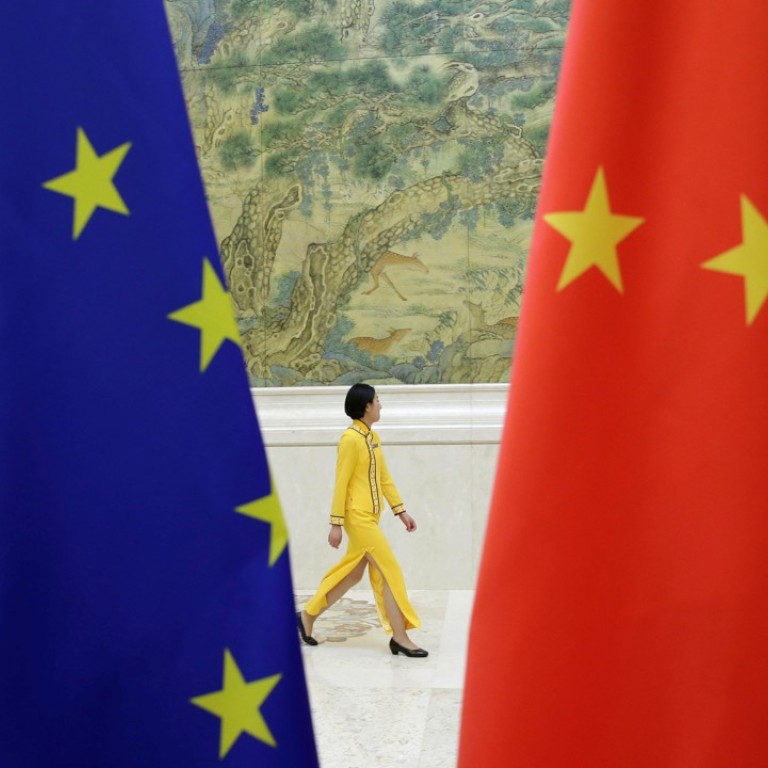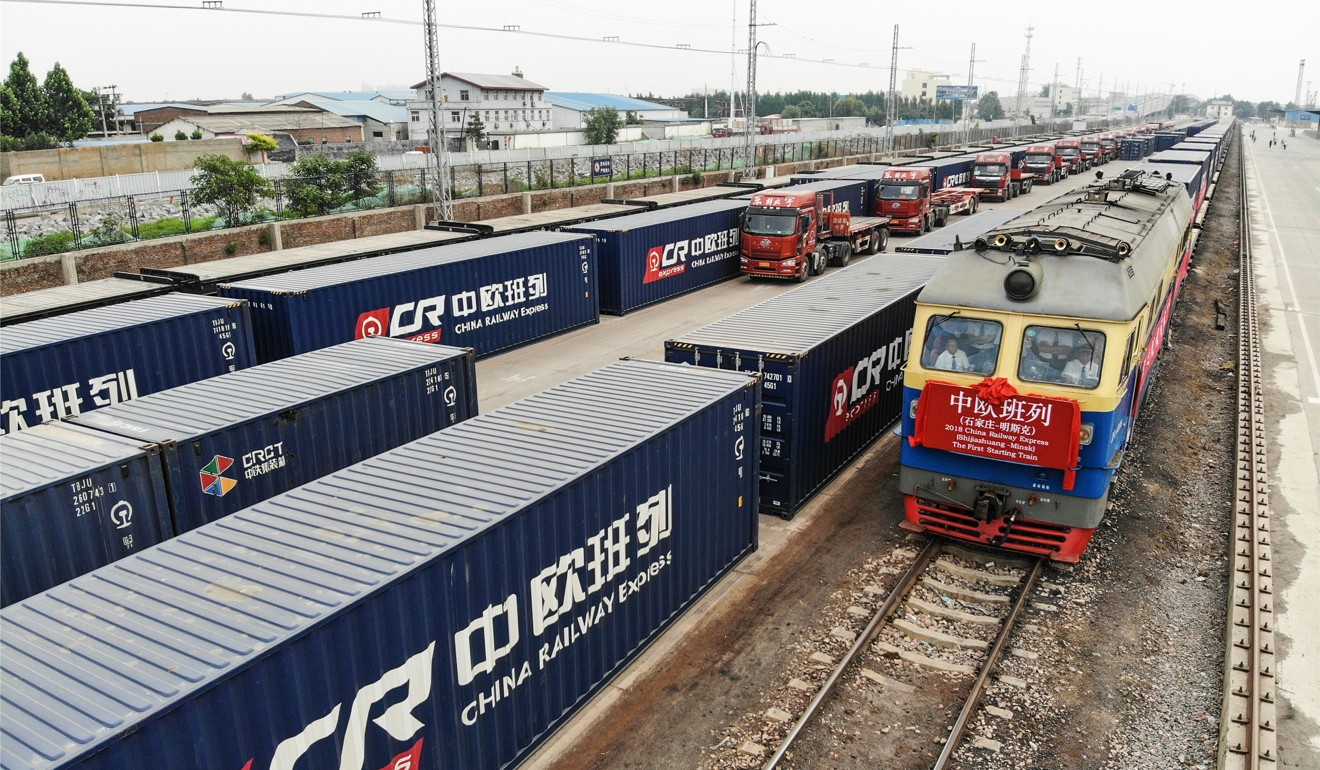
European Union has a plan for Asian infrastructure but will it collide with China’s belt and road?
New ‘sustainable’ initiative could result in a fourfold increase in bloc’s investment in the region, officials said
The European Union has put forward its own infrastructure and investment plan for Asia with emphasis on sustainability and rules-based investment – aspects which China’s “Belt and Road Initiative” has been accused of lacking.
The EU’s investment in Asia could increase up to fourfold in its next budget, strengthening its presence in the region, which is in need of 1.3 trillion euros (US$1.5 trillion) for infrastructure investment a year, according to EU officials.
The bloc did not say if it was competing with China, but said the plan was urgently needed because other players were setting their own strategies.
Observers said it would rival the belt and road plan – President Xi Jinping’s flagship project to boost infrastructure and trade links which was launched in 2013 with plans to invest more than US$80 billion for infrastructure linkages for more than 60 nations from Asia to Africa.
Under its plan, the EU will seek to extend the current Trans-European Network for Transport which stretches across Eastern Europe and the Caucasus region to Asia through a combination of rail, sea and inland waterways.
Navigating the bumps on the ‘Belt and Road Initiative’
The EU will also pursue air transport agreement negotiations with Southeast Asian nations, Azerbaijan, Turkey and Qatar. Energy infrastructure projects, as well as interpersonal exchanges and scholarships to increase flows between Europe and Asia are also suggested.
The plan will build off the billions of dollars the EU has previously committed to Asia. The EU external action budget will be increased to 123 billion euros for 2021-27.
The EU has already mobilised 4.2 billion euros between 2010 and mid-2018 for its Asia Investment Facility and the Investment Facility for Central Asia.

The bloc said its investment would be driven by a sustainable and rule-based model, which it said would adhere to high standards of transparency and environmental protection, and ensure a level playing field for enterprises.
The plan was put forward as other major players have also introduced connectivity programmes for the region. In July, the US announced US$113 million in new investment for the Indo-Pacific region.
Both the US and Europe have said China’s belt and road programmes are not transparent and benefit Chinese enterprises which hire Chinese workers instead of local people, while causing damage to the environment.
EU Vice-President Federica Mogherini highlighted the potential differences with the belt and road plan in a press conference in Brussels on Thursday, saying a “European approach” would be based on international rules, and aim to create jobs and sustainable development in Asian partner countries.
Mogherini said European Union investments could increase three to four times as a result of the new policy.
But she said the EU would not officially decide its position on the relationship between its plan and the belt and road strategy until the policy was adopted next month, adding that it was in the best interests of both parties to increase connectivity between Asia and Europe.
Frans-Paul van der Putten, senior research fellow of the Clingendael Institute, a Dutch policy research organisation, said the EU’s implicit message was that its own approach was actually more attractive than China’s.
Ding Chun, an economics professor at the Centre for European Studies at Fudan University, said the plan had competitive and cooperative elements in relation to China’s initiative, but that the two could work together to open new markets that would benefit all parties.
“The ‘Belt and Road Initiative’ has its fans and critics within Europe, but ultimately the EUdoes not want to miss out on the opportunities,” Ding said.
Cui Hongjian, a senior fellow with the China Institute of International Studies, said the belt and road strategy had helped spur Europe to create its own plan.
“Whether you see the relationship as competition or cooperation, it’s clear Europe accelerated the preparation of its initiative in response to the belt and road,” he said.
But he believes Europe’s plan may encounter difficulties when it brings its rules and norms to Asia.
“The EU’s rules may work well within its own borders, but they should prepare themselves for the possibility that Asian countries may not accept them,” he said.

